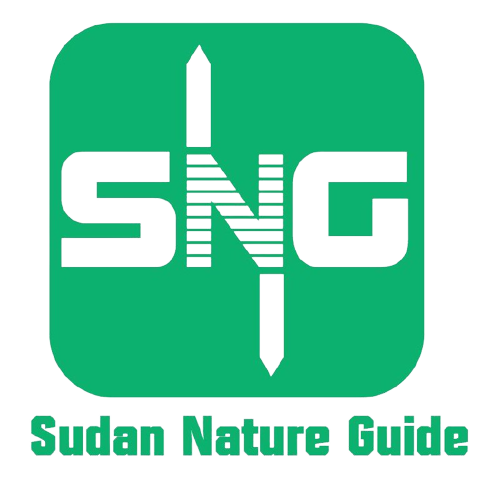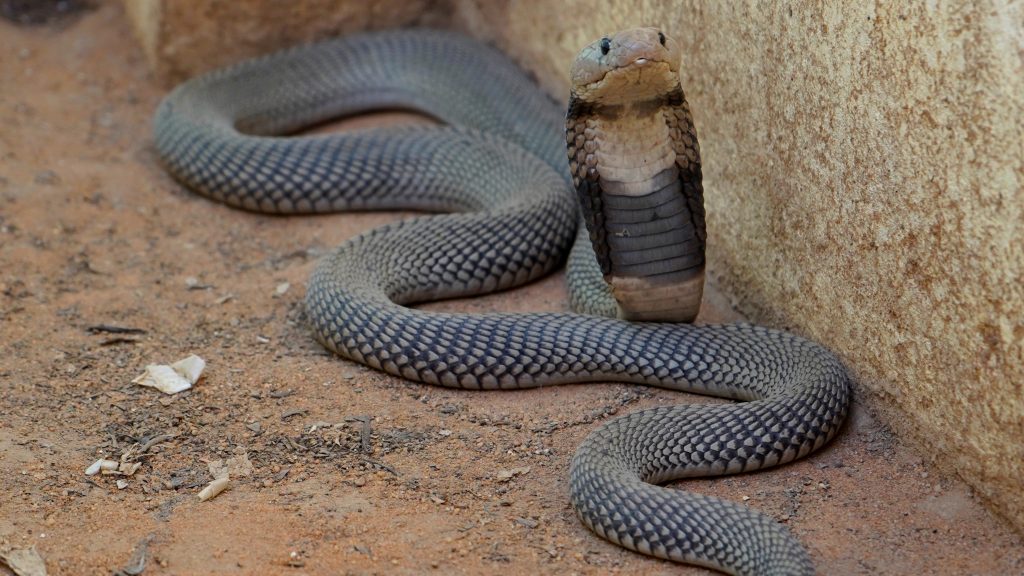By Entesar Salih
Nubian Spitting Cobra Naja nubiae (Dagar, Abu Darag)
Description:
It is recently described; it has a large eye with round pupil. there are two bands across the neck, the bases of the scales are strongly blackened, the color is grey some time olive, the black of the labial scales edging is black below and behind the eye, created black teardrop, (Stephen 2020), which is characteristic feature of this species from other Naja sp in Sudan.
Habitat and Distribution:
Dry savanna, semi-desert, vegetated rocky hills and riverside vegetation along the Nile valley.
Distribution in Sudan:
Commonly distributed species exist along the Nile Valley in eastern, central, northern Sudan along Nile Valley and west to Kordofan; it is the common venomous species in the capital Khartoum, responsible for several snakebite and spitting cases. There is an isolated population in western Sudan at Jebel Marra (Stephen 2020).
Envenomation:
The venom is cytotoxic, causing swelling and local necrosis.
First Aids:
- After ensuring the patient and onlookers have moved out of range of further strikes by the snake, the bitten person should be reassured and persuaded to lie down and remain still.
- Wiping the bite wound once with a damp cloth to remove surface venom but the wound must not be massaged.
- All rings or other jewelry on the bitten limb, especially on fingers, should be removed, as they may act as tourniquets if oedema develops.
- If the bite is on a limb, a broad bandage (even torn strips of clothing or pantyhose) should be applied over the bitten area at moderate pressure.
- The bitten limb should then be immobilized as effectively as possible using an extemporized splint or sling.
- If there will be considerable delay before reaching medical aid, measured in several hours to days, then give clear fluids by mouth to prevent dehydration, Avoid peroral intake, absolutely no alcohol. No sedatives outside the hospital
- The snakebite victim should be transported as quickly and as passively as possible to the nearest place where they can be seen by a medically trained person (health station, dispensary, clinic, or hospital). The bitten limb must not be exercised.
- Most traditional, and many of the more recently fashionable, first aid measures are useless and potentially dangerous. These include local cauterization, incision, excision, amputation, suction by mouth, vacuum pump or syringe, combined incision and suction (“venom-ex” apparatus), injection or instillation of compounds such as potassium permanganate, phenol (carbolic soap) and trypsin, application of electric shocks or ice (cryotherapy), use of traditional herbal, folk and other remedies including the ingestion of emetic plant products and parts of the snake, multiple incisions, tattooing and so on.
Section 2: First aid for venom spit ophthalmic:
- Wash the eye or other affected mucous membrane as soon as possible using large volumes of water or any other available bland fluid. Never use chemical solutions or petroleum products such as petrol or kerosene. Milk is soothing and can be used, or in an emergency beer or urine are possibilities. Keep washing the eyes and hold them under a slowly running tap for several minutes, while opening the eyelids and rotating the eyeball. The eye will be very painful, so patience, tact, and reassurance are needed.
- The eye should be bandaged using a pad over the eye and dark glasses worn.
- Don’t let the victim rub the eye.
- Seek urgent medical attention.

